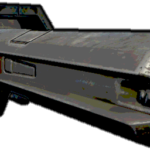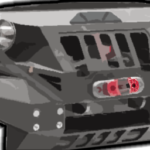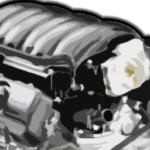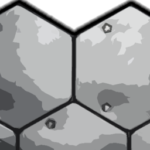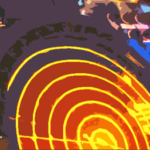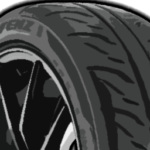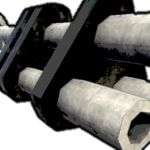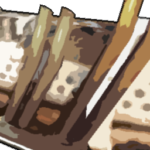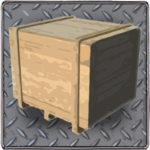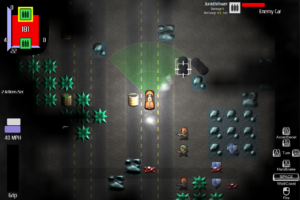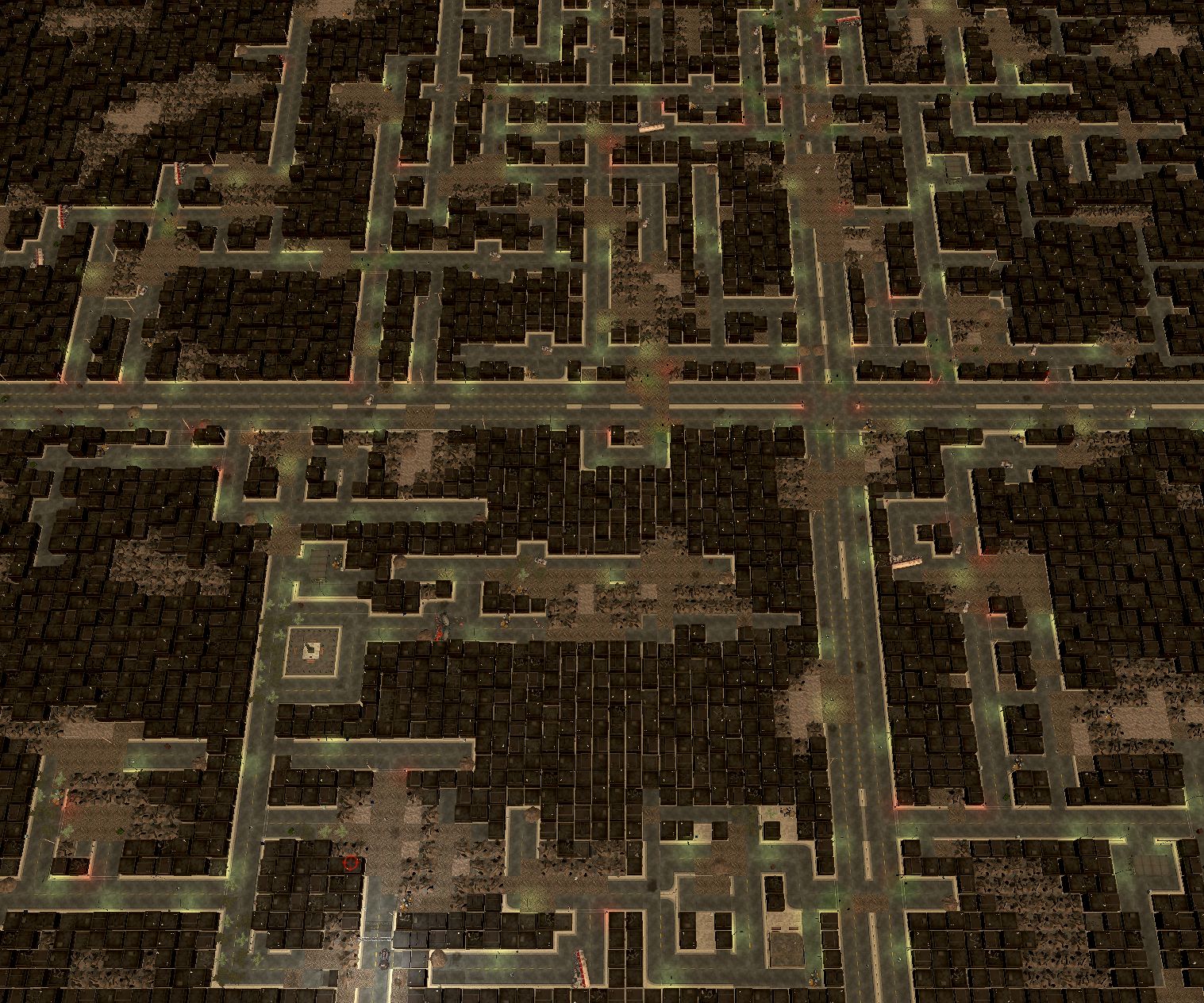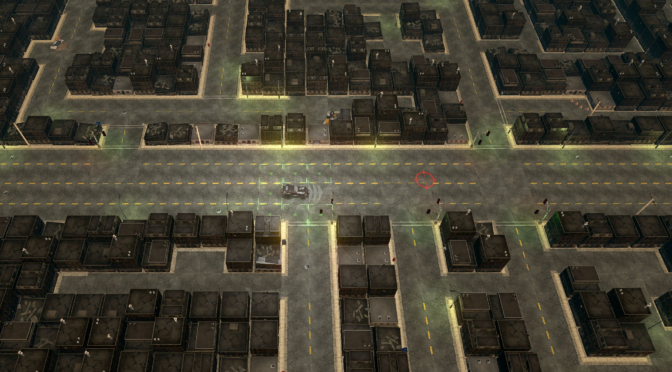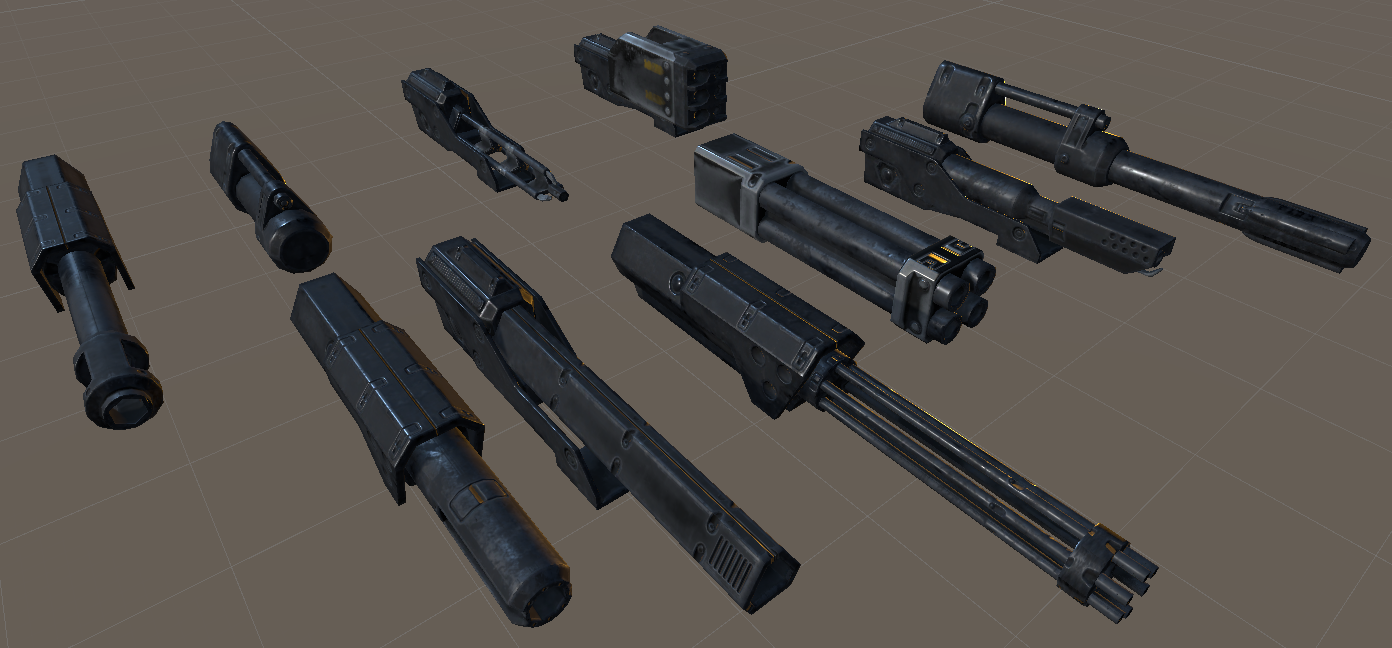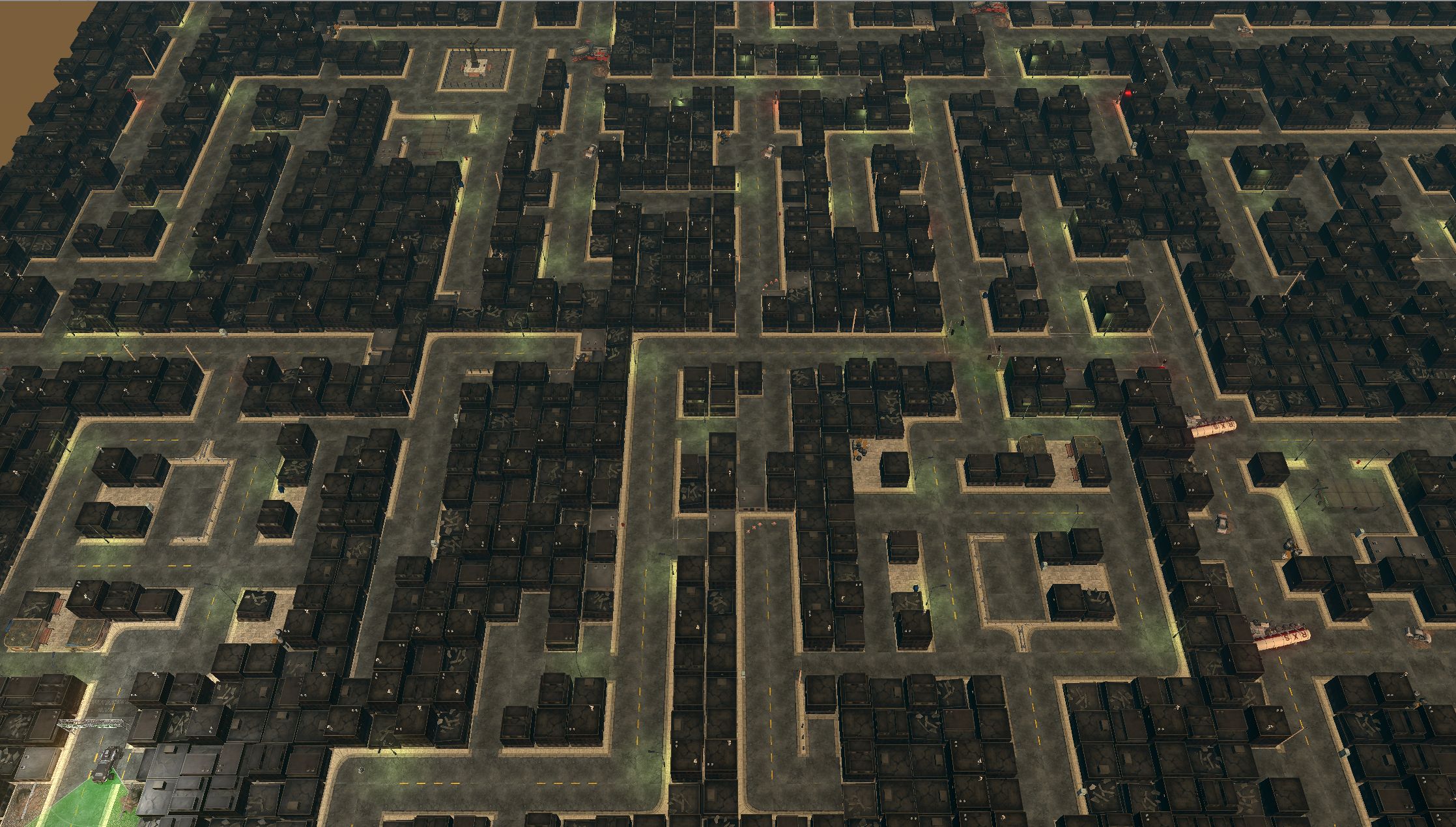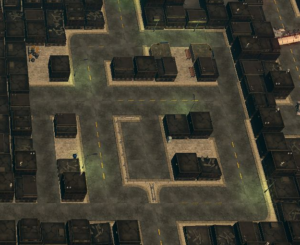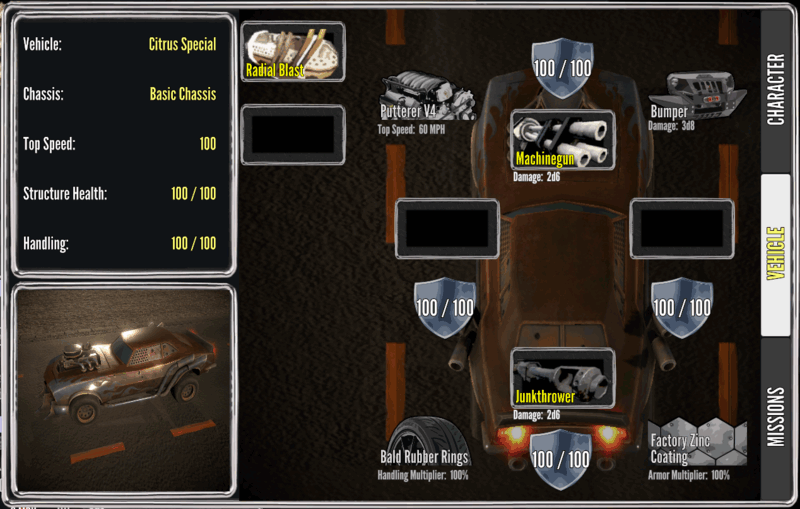 The Seattle summer has finally gotten into full swing and it’s harder to stay inside, but in spite of this I’ve pulled together some time to work on Auto Fire’s core player systems…  and this involved a lot of time with Photoshop and Word as well as with Unity and Visual Studio.
The Seattle summer has finally gotten into full swing and it’s harder to stay inside, but in spite of this I’ve pulled together some time to work on Auto Fire’s core player systems…  and this involved a lot of time with Photoshop and Word as well as with Unity and Visual Studio.
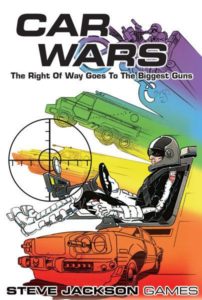 As a rule, I design in a a very top-down way… Â Visuals, mockups, and models are very important for me to get my head around the design as well as to communicate it to others for feedback. Â My objective with Auto Fire was to keep the spirit of the deep car customization from games like Car Wars, but to streamline it for a smoother play experience.
As a rule, I design in a a very top-down way… Â Visuals, mockups, and models are very important for me to get my head around the design as well as to communicate it to others for feedback. Â My objective with Auto Fire was to keep the spirit of the deep car customization from games like Car Wars, but to streamline it for a smoother play experience.
I was a  huge fan of Car Wars back in the eight-e’s, but building a car for the game involved a wholllllle lot of pencil lead and eraser nubs…. like, blackened rubber crumbs all over the damn place. Players had to choose their 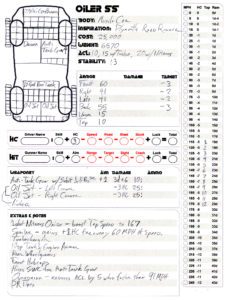 body style, chassis, engine, tires, armor, weapons and equipment, all while balancing out limited space, weight and engine power to push everything forward.  It was great, but it was a solid half-hour (more or less depending on your experience) to make a good build…  If it helps you get a feel, think of the time investment of rolling up a new pen-and-paper character or, say, building a new Magic deck.
body style, chassis, engine, tires, armor, weapons and equipment, all while balancing out limited space, weight and engine power to push everything forward.  It was great, but it was a solid half-hour (more or less depending on your experience) to make a good build…  If it helps you get a feel, think of the time investment of rolling up a new pen-and-paper character or, say, building a new Magic deck.

Incorporating mechanics for hardcore things like weight and spaces wasn’t impossible to pull off, but things like switching out weapons or changing gear can feel like something of a chore…  I felt I could do better.  For years and years now I toyed with the idea of applying a Diablo-style inventory grid, perhaps combined with the damage grid system from a number of FASA titles (I personally was a fan of the Renegade Legion series).  The idea had some promise, in that players had to find space on their vehicle for various weapons, and make tradeoffs to clear space for special equipment, huge engines, or cargo.  In addition, damage could be allocated square by square, penetrating into the car and damaging components as it reached them.
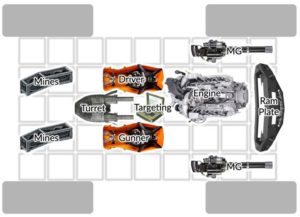
Being a top-down designer, my preferred way to hash out problems like this is to mock up the interface, move parts around, and visualize how it will feel for the player. Â As I played with the parts IÂ started to realize that applying “damage templates”, is really a kind of magic made for pencils and templates and the tension of rolling locations and hoping the template doesn’t include your driver or engine. Â In a digital product where you don’t color in the squares yourself, it threatens to descend a bit into indecipherable noise. Â In addition, when rearranging a car into different configurations, the spatial rules of vehicles started to clash with the system… Â often the only extra room for a driver or engine was in the back corner or something. Â It just didn’t feel like a vehicle the way I wanted. Â Finally, I really wanted to incentivize the player to socket in new equipment as it is encountered, acquire new cars and choose various ones to meet the specialties for specific missions. Â Ideally buying a new car gets you more than just a new set of numerical stats and grid layout. Â “Vehicle loadout Tetris” still fascinates me and I’d love to try a PnP version of it or implement it into a arena-based game, but I’m steering away from it for this particular project. (See what I did there, wakka wakka).
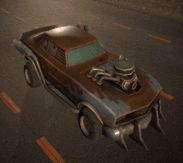 Sooooooo in the end I went back to something a little more akin to decking out gear in an RPG, but there are some nuances that I believe will feel fresh when applied to vehicle loadouts.  When decking out a vehicle, the starting point is always the Chassis.  This is the body that everything else is built upon…  The player can acquire them at car dealerships, receive them as mission bounty, or salvage them in the wilds as loot.  Each chassis has some base stats that any equipment will modify, such as handling, armor, and fuel capacity.  It also has some built-in equipment as well as slots that can be customized…  Each vehicle body ultimately sports a fairly unique configuration.
Sooooooo in the end I went back to something a little more akin to decking out gear in an RPG, but there are some nuances that I believe will feel fresh when applied to vehicle loadouts.  When decking out a vehicle, the starting point is always the Chassis.  This is the body that everything else is built upon…  The player can acquire them at car dealerships, receive them as mission bounty, or salvage them in the wilds as loot.  Each chassis has some base stats that any equipment will modify, such as handling, armor, and fuel capacity.  It also has some built-in equipment as well as slots that can be customized…  Each vehicle body ultimately sports a fairly unique configuration.
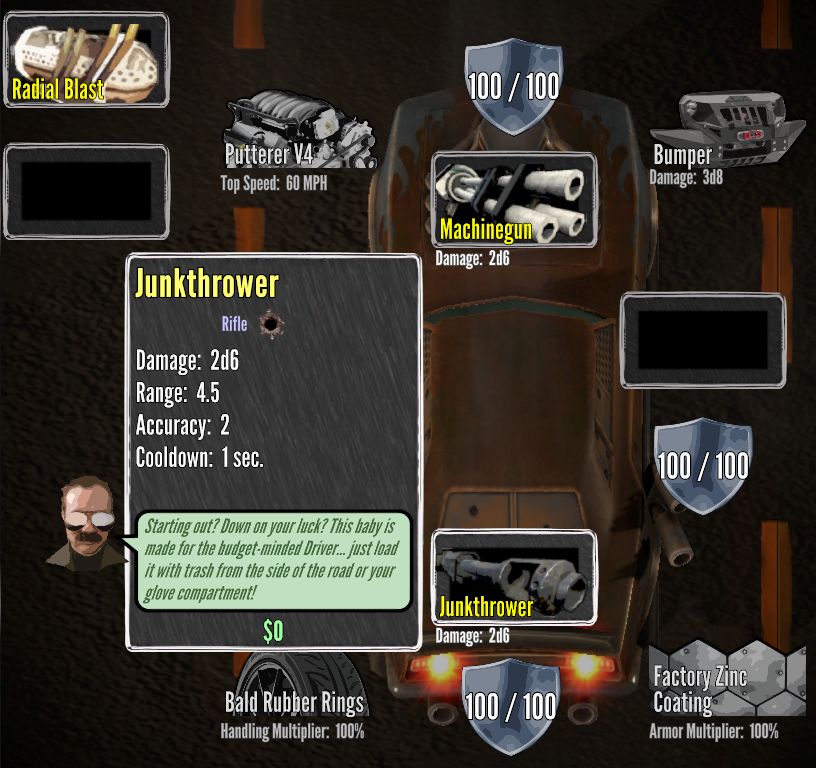
Some chassis can sport large engines, but have limited handling. Â Some can hold huge amounts of armor, but can only mount a large tank weapon in the front. Â Some might have a turret mount, but the armor cannot be upgraded. Â Some have a slower engine that cannot be replaced, but can haul an amazing amount of cargo.
Chassis and equipment can be found with mods that add additional bonuses and abilities that make finding loot interesting.  Weapons can be placed on any side of most vehicles, but heavy weapons need special mounts to be used, and turret slots are fairly rare.  Ram Plates can have explosive charges or sharpened edges for added effects.  Engines define a vehicle’s top speed, but it can also have acceleration benefits or a larger fuel capacity.  Tires can improve handling, but they can also resist damage from spikes or add to stealth properties.  An Armor Frame can boost a car’s armor, make it fireproof or laser-reflective, or even add mounted blades to slash on-foot enemies when driving adjacent to them.
Cargo Capacity is one of the most important reasons for players to change up their rides, as each chassis has a different number of cargo slots.  Most found equipment can be picked up without concern for weight or space (again, I didn’t want being out in the waste recovering gear to be a hassle), but cargo slots are used to hold major items for courier jobs like scientific gear, or priceless art, or passengers.  Rather than always running at capacity, however, a smart Driver may leave an extra space available in their vehicle during a run. This way they are prepared in case they run into special salvage out in the wilds, or a civilian who needs transport to safety…  for a hefty price, of course.  And if you find a crate of priceless military tech as you pick your way through a wrecked convoy and have no room…?  Well, you can always kick that sorry bastard to the side of the road to make space.
So all of this has to come together into a playable whole, of course. Â I’ve got a lot of the core systems and definitions together for dozens of pieces of gear, but the next step is to implement the garage interface where players can buy and sell equipment as well as reconfigure their loadouts. Â And there’s much more to do to make sure that decking out your car is as interesting as it possibly can be. Â It’ll be an interesting summer.

